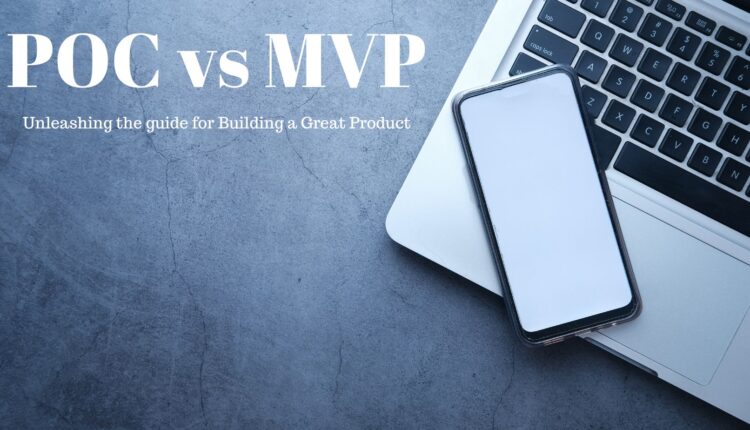In the world of product development, two essential concepts often come into play – Proof of Concept (POC) and Minimum Viable Product (MVP). While both serve distinct purposes, they are often misunderstood or used interchangeably. Understanding the difference between POC and MVP is crucial for entrepreneurs, startups, and even established companies, as it can significantly impact the success of a new product or service. In this article, we will delve into the purposes and benefits of POC and MVP.
What is Proof of Concept (POC)?
A Proof of Concept is a preliminary version or a small-scale implementation of an idea, concept, or technology designed to demonstrate its feasibility. The primary goal of a POC is to validate whether a particular concept can be implemented effectively to solve a specific problem or meet certain requirements. It is not concerned with delivering a complete or polished solution but rather with showcasing the technical or functional viability of an idea.

Benefits of a Proof of Concept
A POC is a very important step while implementing or developing new ideas, technology, or a product. There are feasibility and potential benefits and they are:
Risk Mitigation
Copyright TechPlanet.today
By creating a POC, businesses can identify potential technical challenges or shortcomings early in the development process, minimizing risks associated with investing in a full-fledged product that might not work as intended.
Feedback and Validation
POCs allow stakeholders to gather valuable feedback from users, investors, or other interested parties, providing insights that can be used to refine the idea and make informed decisions.
Cost and Time Efficiency
Since POCs are often small-scale projects, they require fewer resources and can be developed and tested quickly, helping businesses save time and money.
When to Choose POC
- The main goal is to test the feasibility of a concept or technology.
- There is uncertainty about whether a certain approach or technology will work.
- The focus is on technical validation rather than market validation.
- The aim is to gather feedback from technical experts or stakeholders.
What is a Minimum Viable Product(MVP)?
MVP is a version of a product with just enough features to satisfy early customers and gather feedback for future development. The key objective of an MVP is to launch a functional product in the market as soon as possible, which allows businesses to learn from real user interactions and behavior. Unlike a POC, an MVP is more advanced and represents a significant step toward a full-fledged product.

Benefits of a Minimum Viable Product
The features that MVP has are to satisfy early customers and gather valuable feedback for future development. Creating an MVP offers several benefits, both for startups and established businesses. Here are some of the key benefits:
Real-world Testing
By launching an MVP, businesses can gather actual user data and behavior, helping them understand how the product performs in the real world and what improvements are necessary.
Early Market Entry
MVPs allow companies to enter the market quickly and gain a competitive advantage, even with a basic version of the product.
Iterative Development
The iterative nature of MVPs facilitates continuous improvement based on user feedback, leading to a more customer-centric and successful end product.
When to Choose MVP
- The goal of MVP is to validate the market demand for the product.
- There is a basic, functional version of the product that can be developed quickly.
- The focus is on gathering feedback from real users to improve the product iteratively.
- The intention is to launch a product in the market and gain a competitive edge.
POC vs MVP

Summary
Both POC and MVP are valuable tools in software product development services. While POCs help validate technical feasibility, and MVPs enable businesses to gather real user feedback and validate market demand. Therefore, by understanding the difference between POC vs MVP, entrepreneurs and product teams can make informed decisions, optimize resource allocation, and increase the chances of success for their products in today’s competitive business landscape.
In case you have found a mistake in the text, please send a message to the author by selecting the mistake and pressing Ctrl-Enter.
#POC #MVP #Guide #Building #Great #Product


